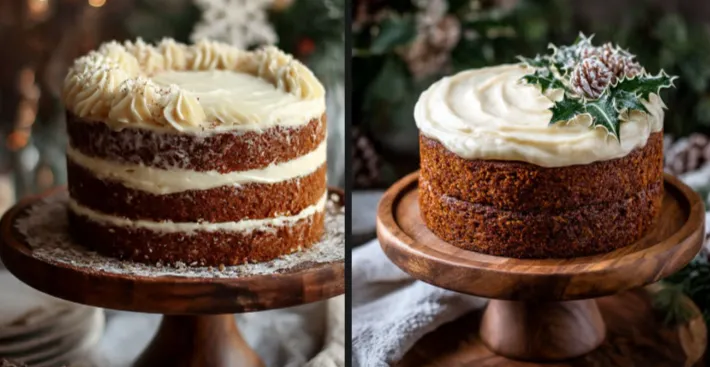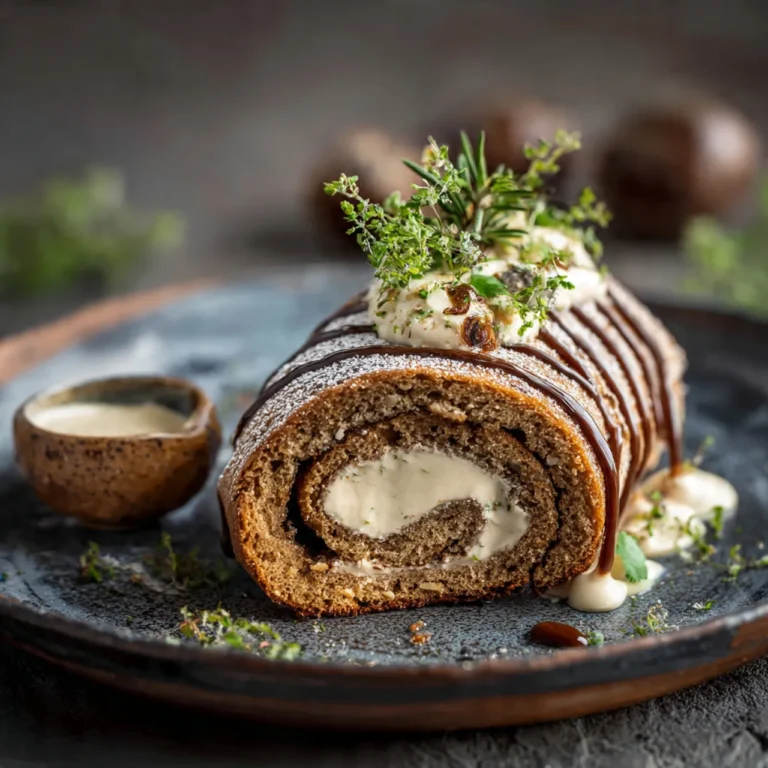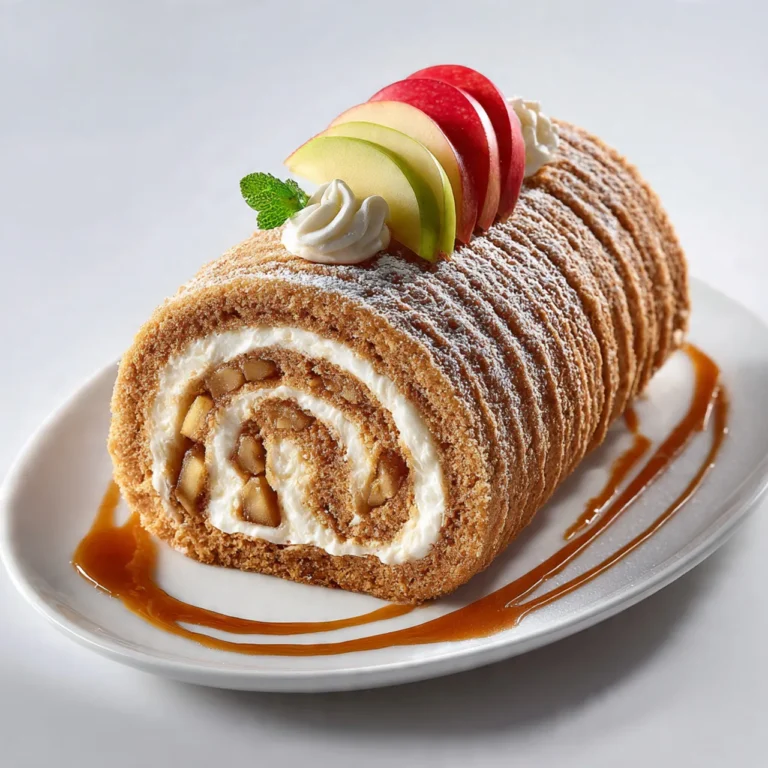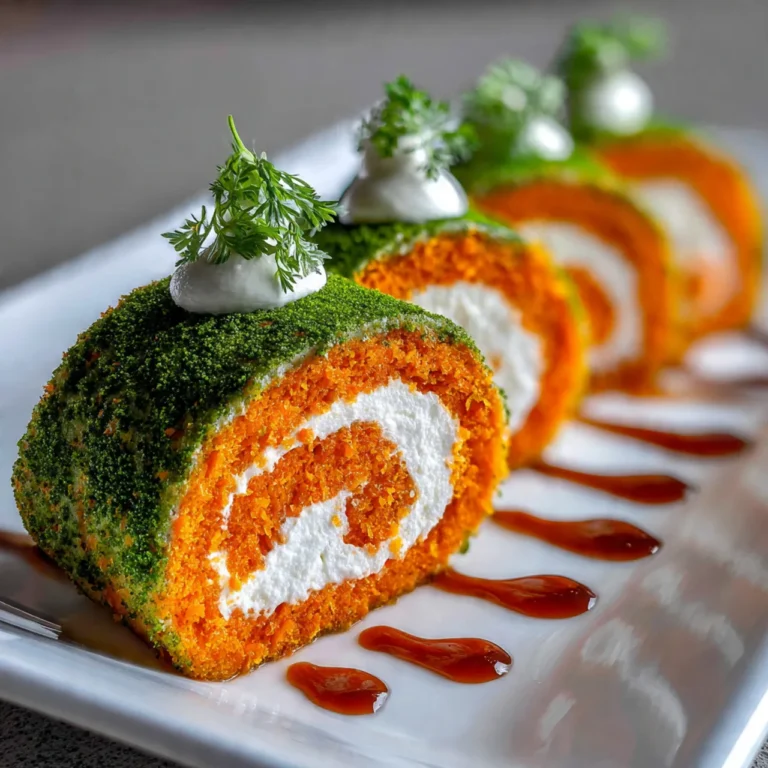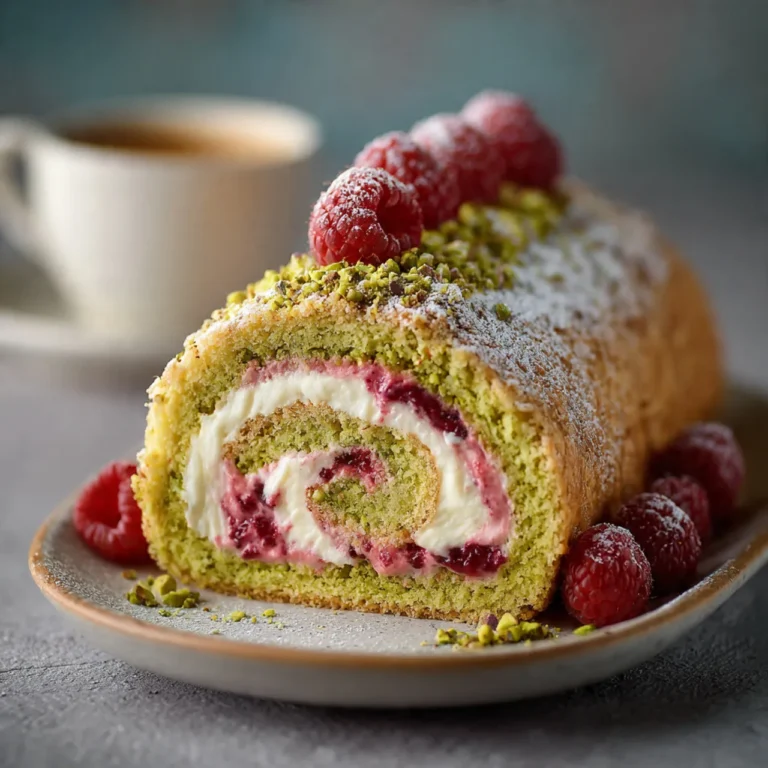Gingerbread cake with cream cheese frosting is the essence of holiday baking — soft, warmly spiced, and irresistibly fragrant. With its deep molasses flavor, hints of cinnamon and ginger, and a luscious cream cheese topping, this cake captures the cozy spirit of winter in every bite. Whether served at Christmas dinner or enjoyed with coffee by the fire, it’s a dessert that feels like home.
The Essence of Gingerbread Cake
Gingerbread cake is a timeless dessert that combines the bold flavors of ginger, cinnamon, and cloves with the rich sweetness of molasses. The result is a moist, tender cake that’s both comforting and festive. The cream cheese frosting adds a tangy contrast that balances the spice and sweetness perfectly.
This cake is simple to make yet elegant enough for any holiday table. Its aroma alone — warm spices mingling with molasses — instantly evokes the magic of the season.
Why Gingerbread Cake Is So Special
Gingerbread cake is more than a dessert; it’s a holiday tradition. Its flavor profile — spicy, sweet, and slightly smoky from the molasses — is nostalgic and comforting. The cream cheese frosting adds a creamy, tangy finish that elevates the cake from rustic to refined.
It’s also versatile: bake it as a layer cake, sheet cake, or even cupcakes. However it’s served, it brings warmth and joy to every gathering.
Ingredients and Their Roles
Flour: Provides structure and softness.
Molasses: Adds deep flavor, color, and moisture.
Brown sugar: Enhances sweetness and caramel notes.
Butter: Adds richness and tenderness.
Eggs: Bind the ingredients and add structure.
Buttermilk: Keeps the cake moist and adds a subtle tang.
Baking soda and baking powder: Help the cake rise and stay light.
Spices: Ginger, cinnamon, nutmeg, and cloves create the signature flavor.
Cream cheese: The base of the frosting, adding tang and creaminess.
Powdered sugar: Sweetens and smooths the frosting.
Vanilla extract: Adds warmth and depth to both cake and frosting.
Step-by-Step Recipe for Gingerbread Cake with Cream Cheese Frosting
Ingredients
For the cake:
- 250 g (2 cups) all-purpose flour
- 1 teaspoon baking soda
- 1 teaspoon baking powder
- 1/2 teaspoon salt
- 2 teaspoons ground ginger
- 1 teaspoon ground cinnamon
- 1/4 teaspoon ground nutmeg
- 1/4 teaspoon ground cloves
- 115 g (1/2 cup) unsalted butter, softened
- 100 g (1/2 cup) brown sugar
- 120 ml (1/2 cup) molasses
- 2 large eggs
- 240 ml (1 cup) buttermilk
For the cream cheese frosting:
- 225 g (8 oz) cream cheese, softened
- 115 g (1/2 cup) unsalted butter, softened
- 1 teaspoon vanilla extract
- 300–350 g (2 1/2–3 cups) powdered sugar, sifted
Preparation
1. Prepare the cake batter
- Preheat the oven to 175°C (350°F). Grease and line a 9×13-inch (23×33 cm) pan or two 8-inch (20 cm) round pans with parchment paper.
- In a bowl, whisk together flour, baking soda, baking powder, salt, and spices.
- In a large bowl, beat butter and brown sugar until light and fluffy.
- Add molasses and mix until combined.
- Beat in eggs one at a time.
- Alternate adding the dry ingredients and buttermilk, beginning and ending with the dry ingredients. Mix until just combined.
2. Bake the cake
- Pour the batter into the prepared pan and smooth the top.
- Bake for 30–35 minutes (25–30 minutes for round pans), or until a toothpick inserted in the center comes out clean.
- Let the cake cool in the pan for 10 minutes, then transfer to a wire rack to cool completely.
3. Make the cream cheese frosting
- In a large bowl, beat cream cheese and butter together until smooth and creamy.
- Add vanilla extract and gradually beat in powdered sugar until fluffy and spreadable.
4. Frost the cake
- Once the cake is completely cool, spread the frosting evenly over the top (and sides if layered).
- For decoration, sprinkle with cinnamon, crushed ginger snaps, or candied ginger pieces.
Tips for Perfect Gingerbread Cake
- Use dark molasses: For the richest flavor and color.
- Don’t overmix: Keeps the cake tender.
- Cool completely before frosting: Prevents the frosting from melting.
- Adjust spice levels: Add more ginger for extra warmth or reduce cloves for a milder flavor.
- Chill before slicing: Makes cleaner cuts and enhances the flavor.
Variations to Try
Lemon Cream Cheese Frosting
Add 1 tablespoon of lemon zest and 1 teaspoon of lemon juice to the frosting for a bright, citrusy twist.
Maple Gingerbread Cake
Replace part of the molasses with maple syrup and add 1 teaspoon of maple extract to the frosting.
Gingerbread Cupcakes
Bake the batter in cupcake tins for 18–20 minutes and top with swirls of frosting.
Chocolate Gingerbread Cake
Add 2 tablespoons of cocoa powder to the batter for a deeper, more complex flavor.
Spiked Gingerbread Cake
Add 1 tablespoon of dark rum or brandy to the batter for a grown-up version.
Serving Suggestions
Gingerbread cake is perfect for Christmas, winter gatherings, or cozy evenings. Serve it with coffee, hot cocoa, or mulled wine for a comforting treat.
For a festive touch, top with sugared cranberries, candied orange peel, or a dusting of powdered sugar. It also pairs beautifully with vanilla ice cream or whipped cream.
Storage and Make-Ahead Tips
Store the frosted cake in the refrigerator for up to 5 days. Bring to room temperature before serving.
The unfrosted cake can be wrapped tightly and frozen for up to 2 months. Thaw overnight in the refrigerator before frosting.
Nutritional Information (per slice)
- Calories: 380–420 kcal
- Fat: 20 g
- Carbohydrates: 48 g
- Protein: 4 g
- Sugar: 32 g
The History and Tradition of Gingerbread
Gingerbread has ancient roots, dating back to medieval Europe, where it was made with honey, spices, and breadcrumbs. Over time, it evolved into the soft, molasses-based cakes and cookies we know today.
In the 18th and 19th centuries, gingerbread became a holiday staple, symbolizing warmth and festivity. The addition of cream cheese frosting is a modern twist that adds richness and balance to the traditional spiced cake.
The Texture and Flavor Profile
The perfect gingerbread cake is moist, tender, and full of spice. The molasses gives it a deep, caramel-like sweetness, while the ginger and cinnamon add warmth and complexity. The cream cheese frosting provides a creamy, tangy contrast that complements the spices beautifully.
Each bite is a balance of sweet, spicy, and creamy — a comforting taste of the holidays.
Troubleshooting Common Issues
Cake too dry: Overbaking or too little molasses can cause dryness. Bake just until set.
Cake sinking: Avoid opening the oven door too early and measure leavening agents accurately.
Frosting too soft: Chill briefly before spreading.
Cake too dense: Ensure baking soda and powder are fresh and properly measured.
Chef’s Tips for Professional Results
- Weigh ingredients: Ensures consistent texture and flavor.
- Use room-temperature ingredients: Promotes even mixing.
- Sift dry ingredients: Prevents lumps and ensures a smooth batter.
- Apply a crumb coat: For a clean, professional frosting finish.
- Decorate simply: Let the warm color and creamy frosting shine.
Pairing Ideas
- With Beverages: Pair with chai tea, coffee, or spiced cider.
- With Desserts: Serve alongside vanilla ice cream or caramel sauce.
- With Fruit: Fresh pears, apples, or cranberries complement the spices beautifully.
The Joy of Baking Gingerbread Cake
Baking gingerbread cake fills the kitchen with the comforting aroma of spices and molasses — a scent that instantly feels like the holidays. The process is simple yet deeply satisfying, from mixing the batter to spreading the creamy frosting.
It’s a dessert that brings people together, evoking nostalgia and warmth. Whether baked for family, friends, or festive gatherings, gingerbread cake with cream cheese frosting is a celebration of flavor, tradition, and joy.
Conclusion
Gingerbread cake with cream cheese frosting is the perfect holiday dessert — moist, spiced, and beautifully balanced. With its deep molasses flavor, warm spices, and creamy frosting, it captures the essence of the season in every bite.
Whether served at Christmas dinner, shared at a winter party, or enjoyed as a cozy treat, this cake is a timeless favorite. It’s more than dessert — it’s a taste of holiday comfort, tradition, and the simple joy of baking something made with love.
